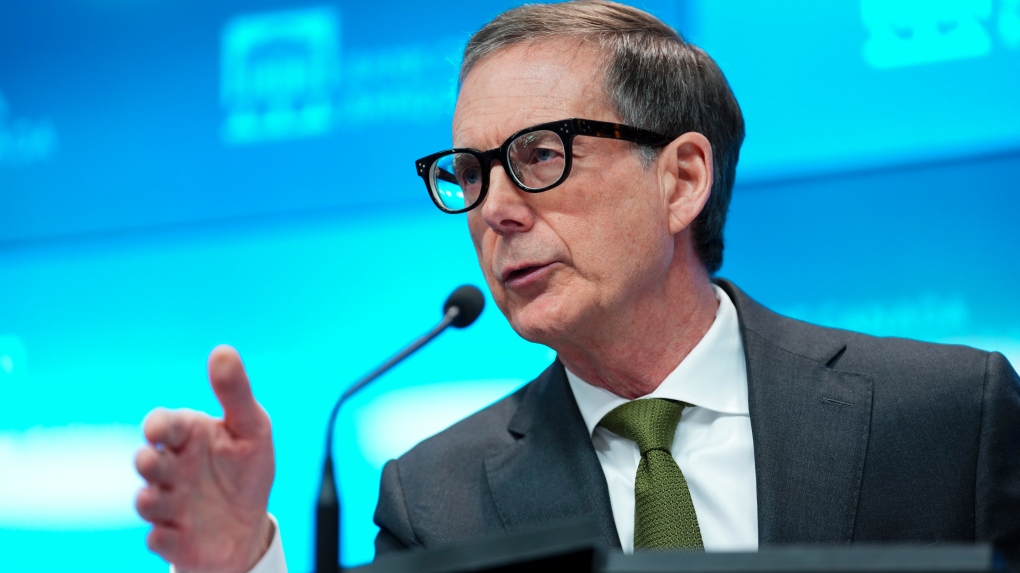


The Bank of Canada held its policy rate at five per cent on Wednesday, saying it needs to see a sustained decline in inflation before rate cuts can begin.
“I realize that what most Canadians want to know is when we will lower our policy interest rate,” Bank of Canada governor Tiff Macklem said. “What do we need to see to be convinced it’s time to cut? The short answer is we are starting to see what we need to see, but we need to see it for longer to be confident that progress toward price stability will be sustained.”
The central bank projects inflation to ease from three per cent earlier in 2024 to 2.5 per cent by the end of this year. Inflation is expected to return to target by 2025, and fall to 2.8 per cent in February.
Macklem did leave the door open for a possible rate cut in June during a news conference with reporters in Ottawa on Wednesday.
“Yes, it is within the realm of possibilities,” he said. “Look, I think we have been pretty clear, we are encouraged by what we have seen since January.”
While progress has been made in cooling inflation, costs in services and food remain elevated.
Dawn Desjardins, chief economist at Deloitte, thinks that despite the signal from the central bank of a potential cut, the policy rate will not return to historic levels seen before and during the pandemic.
“Looking for interest rates to go back to extraordinary low levels would require something that would be very unpleasant, so let’s not hope for that,” she said in an interview with CTV News. “But what we can hope for is that rates go back to more normal levels.”
The central bank is concerned about three main areas that could push inflation higher. House prices could rise more than anticipated due to stronger demand on supply. Shelter price inflation remains high at seven per cent, driven by high mortgage costs and strong growth in rent.
Additionally, the bank is not convinced that wage growth, a key driver in costs, will remain stable. If weak productivity continues, firms could face higher price pressures.
Finally, global tensions such as the wars in the Middle East and in Ukraine could impact global commodity prices further.
“We don’t want to leave monetary policy this restrictive longer than we need to,” Macklem said. “But if we lower our policy rate too early or cut too fast, we could jeopardize the progress we’ve made bringing down inflation.”
Despite improved growth this year, Pedro Antunes, chief economist at the Conference Board of Canada, thinks the economy still remains weak.
“We’re seeing business bankruptcies way up, we’re seeing employment flat line and the unemployment rate come up,” he said in an interview with CTV News. “In a way these are good things for the bank, monetary policy has slowed the economy, and there should (be) some room here to start manoeuvring and pull interest rates down.”
The bank projects gross domestic product (GDP) growth to pick up in the latter half of this year, with the economy expected to grow by 1.5 per cent this year, 2.2 per cent next year and 1.9 per cent in 2026.
An increase in business investment, the completion of the Trans Mountain pipeline and population growth are the key factors that are leading to better growth in the economy.
Canadian exports are also expected to get a boost this year, fuelled mainly by higher demand from the United States.
The next rate announcement is scheduled on June 5.